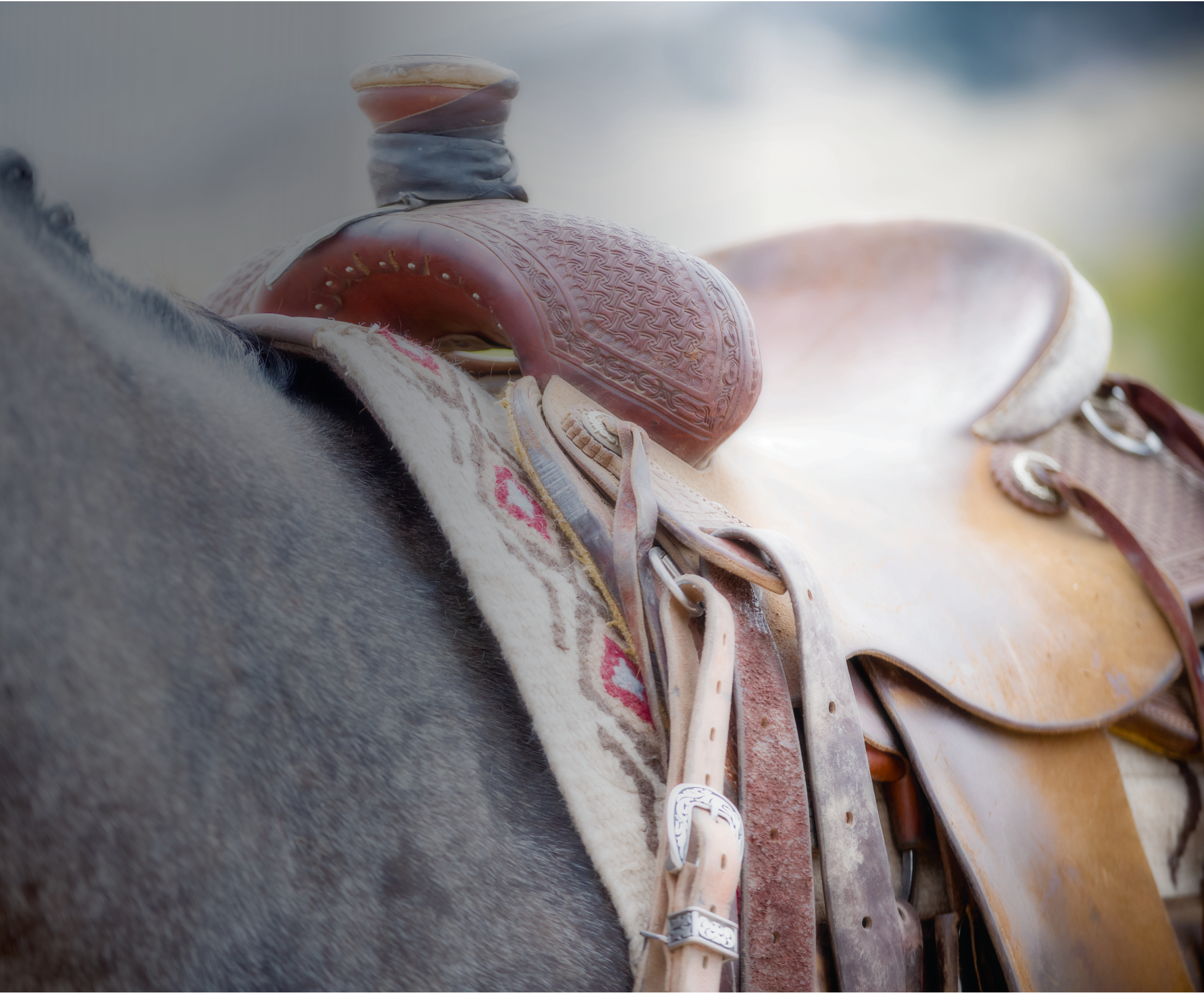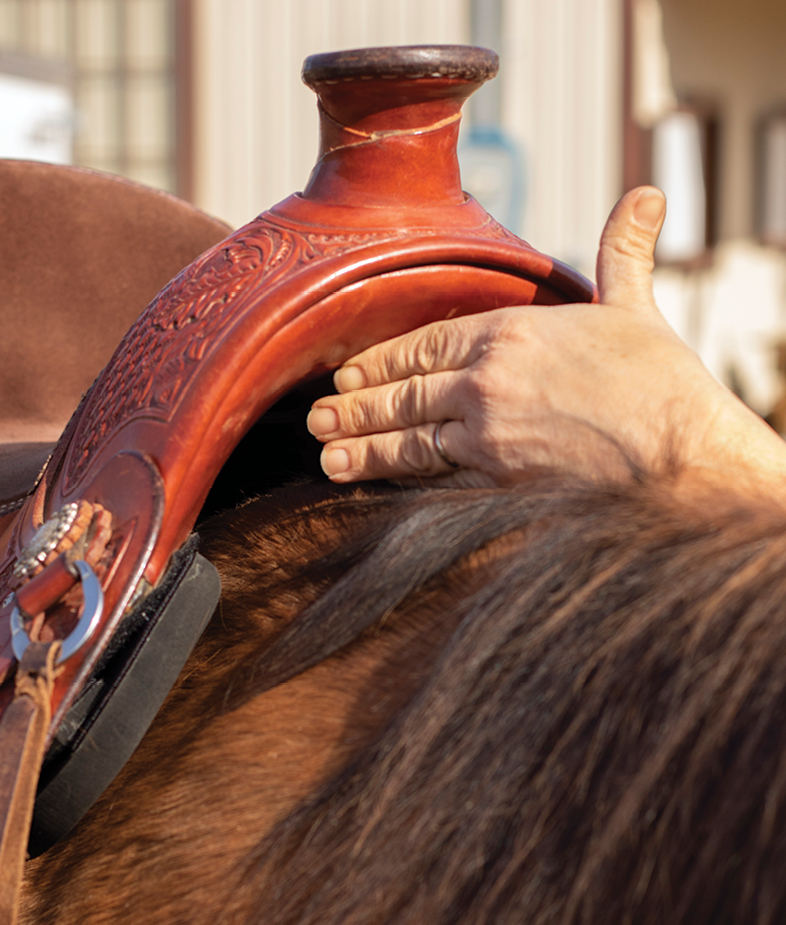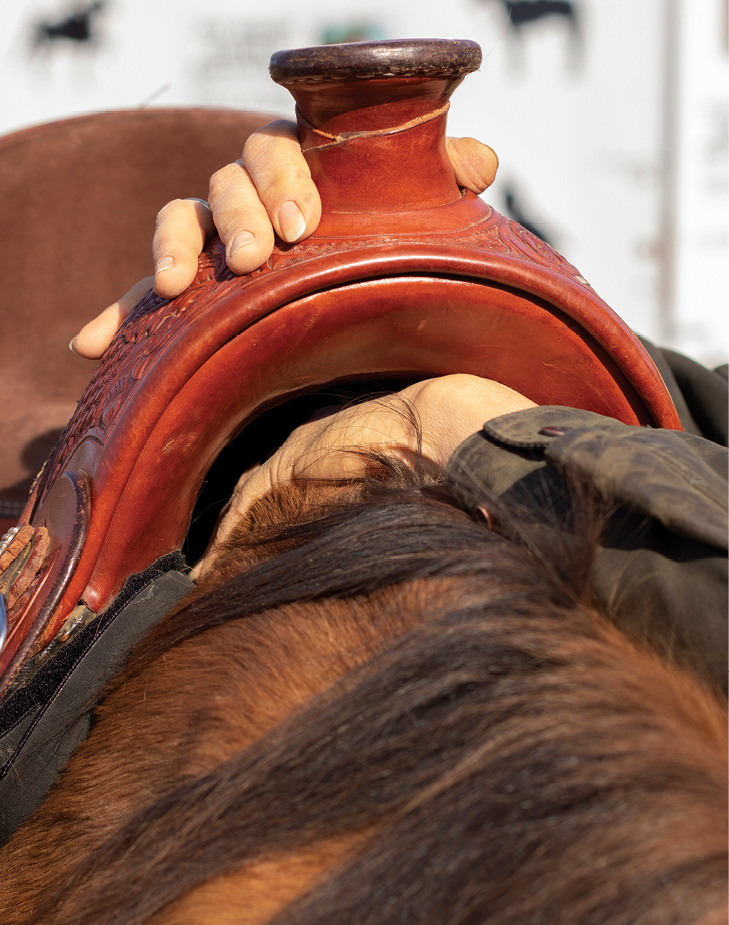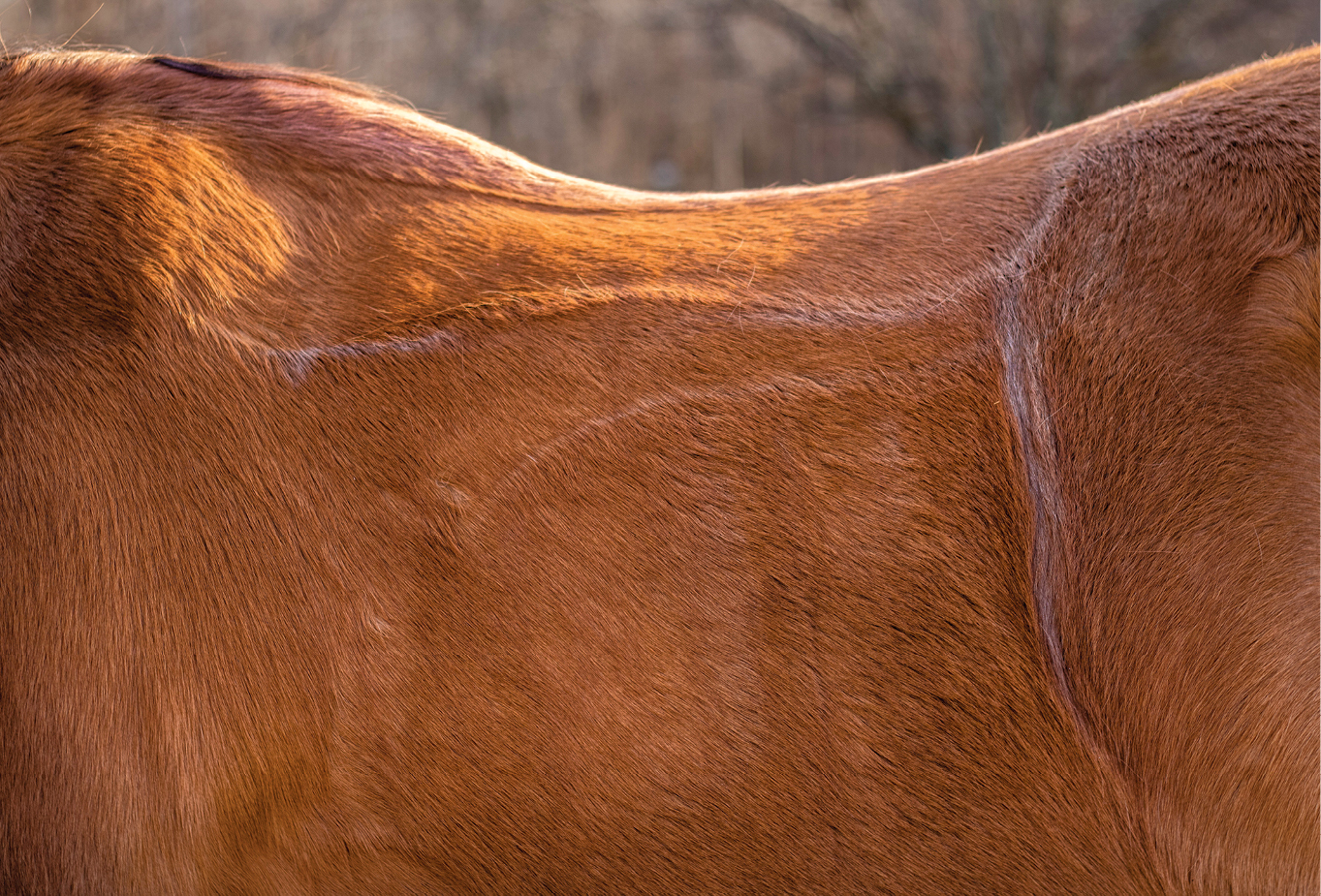Does your horse like to flatten his ears or swish his tail when you go to saddle him? Or maybe he’s never shown any discomfort with saddling, but you’re constantly fighting to stay balanced during a ride. If any of this sounds familiar, you may be riding in a saddle that doesn’t fit you or your horse properly.
Finding the right saddle is crucial. If you want your horse to perform well, you need a saddle that lets him do his job and doesn’t interfere with his natural movement. Just like a poorly fitting sneaker can interfere with your daily workout routine, your horse’s saddle fit can be the difference between a lifetime of comfortable rides or a long list of painful experiences and potential behavior problems.

[More On: Saddle Fit]
Evaluate Saddle Fit for Your Horse
Whether you’re shopping for a new saddle or continuing to use a saddle you’re familiar with, checking your saddle fit should become part of your regular riding routine.
Your horse’s body condition and fitness constantly change with exercise and age. For that reason, I recommend having a professional saddle fitter evaluate the fit of your saddle at least once every year. By keeping an eye on how your saddle fits your horse, you’ll become more attuned to the minute that changes occur.
Here’s how you can evaluate proper saddle fit for your horse.
[More On: Saddle Fitting Tips]
Ensure your saddle stays centered. Once your horse is standing square on level ground, place your Western saddle on your horse’s back without a pad and without tightening the cinch. Check that your saddle is sitting in the middle of your horse’s back and not sliding off to one side or the other.
Free the withers. Your horse’s withers and shoulders need room to move. To check your saddle’s wither clearance, hold your index, middle, and ring fingers straight out with your thumb pointing to the sky. Then slide your hand between the underside of your saddle pommel and the top of the withers. You should not only have clearance on top of the withers but also on the sides so that when your horse bends, his withers can move. If your saddle is too tight against his withers on both sides, he’s not able to bend.
Red flag: If your saddle has insufficient wither clearance on the top or sides, your saddle is too wide for your horse’s back.
Investigate the gullet channel. The hollow down the middle of the underside of your saddle is called the gullet channel. With your hand still under the pommel of your saddle, turn your palm so it’s facing downward and straighten your four fingers. Then slide your hand and arm along your horse’s back and into the gullet channel. When you’re checking for gullet-channel width, you want to allow enough room for the spinal ligament, which is about four fingers wide. There should be enough clearance for the width of your hand all the way down the middle of the saddle.
Red flag: If your saddle is too wide, there may not be enough room down the middle of the gullet channel, which means your saddle may end up sitting on top of your horse’s spinal ligament.


Check the bars. Saddle trees consist of five basic parts: the swell, which sits on top of the fork, the two parallel bars that form the body of the tree, the horn, and the cantle. The bars are the only part of the tree in contact with your horse and they serve to distribute your weight in the saddle.
When checking your saddle’s bars, the angle of the bar in front needs to match the angle of your horse’s shoulders. You can see that angle pretty clearly just by looking, but to ensure a perfect fit, you should also slide your hand down your horse’s shoulders under the saddle and feel whether the angle is right and if there’s enough room for his shoulders to move back and forth. Check all along the underside of the saddle on both sides—not just in front—for full contact from the saddle bars.
Note: There’s no industry standard among saddle makers for the angle or width of a saddle tree’s bars. Saddles may be advertised as having regular, semi-, full, or extra-wide Quarter Horse bars, but these measurements may vary widely.
Consider saddle length. Western saddles are designed to go over your horse’s shoulder and over the lumbar portion of his back. Your weight should be distributed in the area starting from behind your horse’s shoulder and ending before his last rib. While there will always be a portion of the saddle extending past your horse’s last rib, you need to evaluate where you’re positioned in the seat. If you end up seated too far back, it’ll make it more difficult for your horse to carry you.
Red flag: If your Western saddle tree is too long for your horse’s back, your weight may end up being distributed beyond the last rib. Your horse will tighten his back muscles to support you, making it virtually impossible for him to round his back.
Go on a test ride. Take your horse into the arena, and ride without a pad to see exactly how the saddle moves on his back. Walk, jog, and lope in both directions, and complete a few figure eights at the jog. Notice any discomfort your horse may have and dismount once you’ve had a chance to feel for how your horse performs with the saddle on his back.
Look at the impression. After you dismount, pull your saddle off and evaluate the impression it left on your horse’s back. You want to see that all of your horse’s hair is flattened equally from front to back and on both sides, but not down the middle. If his hair is flattened down the middle, that means your saddle was touching the spinal ligament—something you want to avoid. You also want to make sure the impression is as even at the top of the bars as it is at the bottom. If there’s a lot of contact at the top of the bars, but you can’t tell where the bottom of the saddle was, your saddle isn’t fitting your horse properly.
Red flag: Ruffled or damaged hair, which is caused by friction, is a sign of poor saddle fit and should be avoided.
Pad considerations. Some problems can be helped with a pad, so once you know how your saddle fits, you can decide what kind of pad you’re going to use. For example, if there’s a hollow spot or if your saddle is a little too wide, a one-inch-thick felt pad might help. But the thickness of your pad depends on how much room you have, how much protection you need, and how thick your horse is.
While thin wool saddle blankets may be ideal for some saddles, thicker pads might be necessary for others. Riding disciplines can also play a factor.

[More On: Why Saddle Fit Matters]
Evaluate Saddle Fit for You
While most people think about their horse’s comfort when it comes to saddle fit, ensuring proper saddle fit for you is also important. By riding in a saddle that doesn’t fit you, you’re setting yourself up for potential discomfort in your hips, knees, and lower back. An ill-fitting saddle can cause physical pain for you if it prevents you from riding in an aligned shoulder-hip-heel position, which helps you stay balanced and enables your hips, knees, and ankles to act as shock-absorbers to protect your back.
Not only can poor saddle fit cause physical pain, but also it can lead to training or performance issues. When you feel like you’re going to lose balance in the saddle and fall forward, you instinctively tighten your muscles in a fight to stay centered in the saddle. Your horse is most likely going to mirror your reaction, leaving you both tense and stiff. The same applies to saddle fit; if you’re riding in a saddle that doesn’t fit you and you become lopsided, your horse is also going to become lopsided.
When I’m evaluating saddle fit, I’m trying to put together the pieces of a puzzle. The more pieces I have, the clearer the overall picture is, which is why I like to take measurements of the rider after I evaluate his or her horse’s saddle fit.
In addition to height and weight, I also like to measure hips and length of upper leg versus lower leg. Measuring your hips and the length of your femur determines your seat size. When I measure your legs, I’m comparing the measurement of your upper leg to your lower leg so that I know where your stirrups need to hang from the tree to best support a balanced position.
Seat size is important not just for your comfort, but because of how the saddle is built to distribute your weight. Overloading a small saddle can be uncomfortable for you and potentially damaging for your horse’s back, so it’s important to ride in the right size saddle for your height, weight, and leg length.






